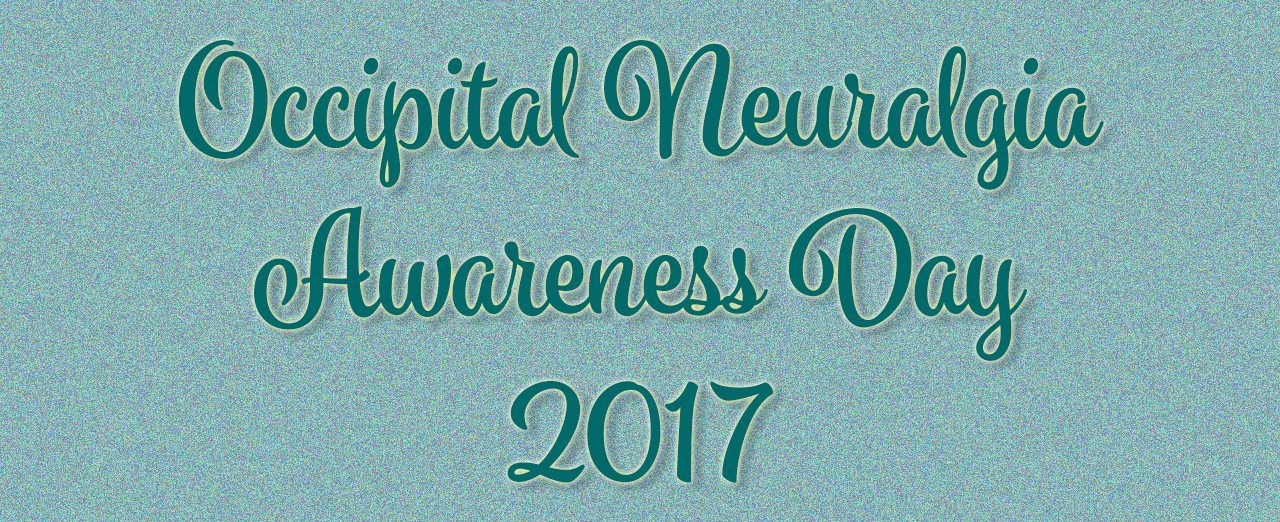The first annual Occipital Neuralgia Awareness Day is today, October 25, 2017!
Occipital Neuralgia (ON) is a spinal nerve pain condition, not a cranial nerve pain condition. It is included here because it is a common condition among facial pain patients.

Definition
Occipital Neuralgia is a condition in which the occipital nerves are inflamed or injured. The occipital nerves run from the 2nd and 3rd cervical vertebrae up the posterior scalp (back of the head) to the vertex (top of the head.) The condition causes pain in the back of the head and/or the base of the skull. It is sometimes called cervicogenic headache.
It is sometimes confused with migraine headaches because the symptoms can be similar. Like the cranial neuralgias, it is most commonly felt on one side of the head or the other, but it is possible to have bilateral occipital neuralgia.
Symptoms
The pain of ON is often described as shooting, zapping, electric, or tingling pain very similar to that of Trigeminal Neuralgia, only with symptoms located on one side of the scalp rather than in the face. Other symptoms include:
- Pain behind the eye
- Sensitivity to light
- Neck pain
- Scalp sensitivity
Causes
ON is the result of pressure on or trauma to the occipital nerve. This can occur due to injury, muscular entrapment, or inflammation. It is a potential complication of MVD surgery, because the area through which the surgeon accesses the cranial nerves is very close to the path of the lesser occipital nerves.
Other possible causes include, but are not limited to:
- Trauma to the back of the head
- Muscle tension
- Arthritis
- Tumors
- Cervical disc disease
- Infection
Raising awareness of this condition is an easy way to have a major impact. Occipital Neuralgia is not a common diagnosis, even within the facial pain community. You could share this post on social media today, and very easily reach someone who has Occipital Neuralgia and has never heard of it before.
You could change a life today, and all you have to do is post the link to this post on Facebook.
There’s nothing quite like a short YouTube video to help spread knowledge of a condition. Feel free to use this one to educate your friends and family. YouTube videos can be shared online, in emails, and in text messages.
Profiles of Courage
If you haven’t gotten your profile picture overlay yet, go ahead and do that now. It’s a great way to spread awareness to the hundreds of people who see your smiling face on social media every day!


UNTIL NEXT TIME, WARRIORS!
GO FORTH TODAY, AND SHARE ON AWARENESS EVERYWHERE.
TOGETHER, WE WILL BRING FACIAL PAIN OUT OF OBSCURITY AND INTO THE LIGHT!


